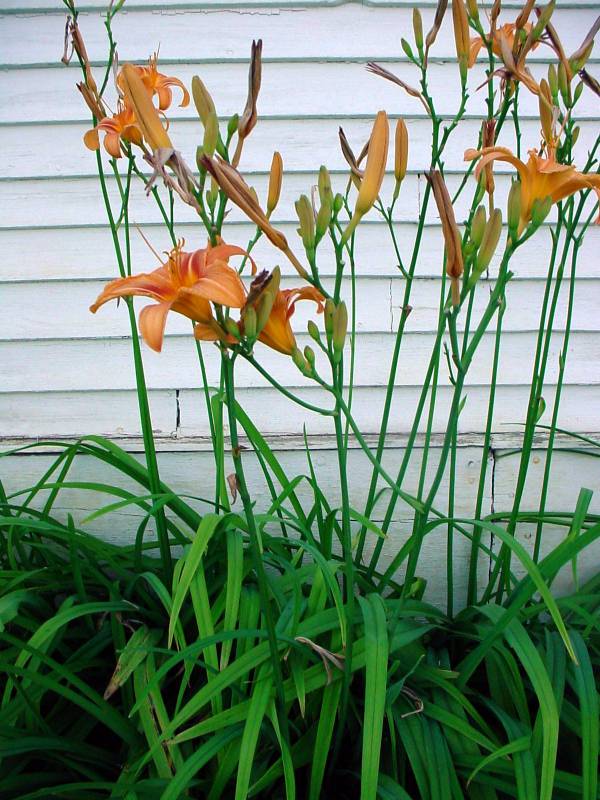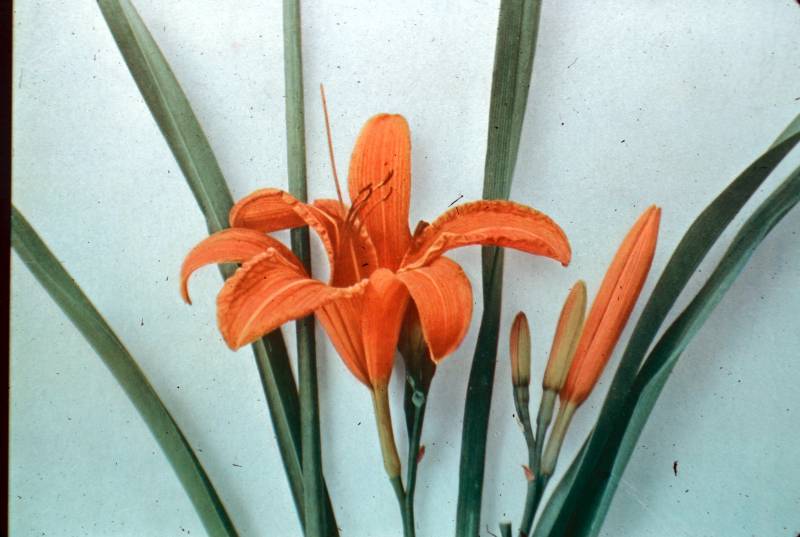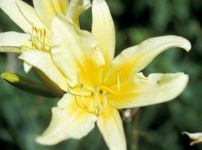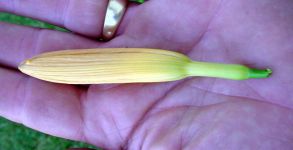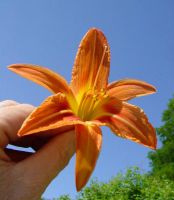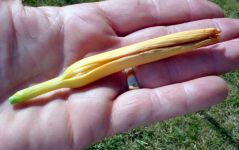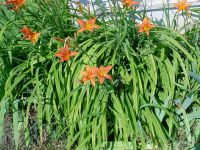Distribution: Occurring in the Puget Sound lowlands; widely distributed throughout North America.
Habitat: Roadsides, old homesteads, stream banks, disturbed sites.
Flowers: May-July
Origin: Introduced from eastern Asia
Growth Duration: Perennial
Conservation Status: Not of concern
Pollination: Butterflies
Perennial, scapose herbs, clump-forming and rhizomatous, the main roots fleshy, the stems 7-15 dm. tall.
Leaves many, basal, sessile, the blades yellowish-green, 7-10 dm. long and 2.5-3 cm. wide.
Scape branched, 10- to 20-flowered, taller than the foliage; perianth tube widely funnel-shaped, 2-3 cm. long; tepals 6, yellow with orange splotches and streaks near the base, the outer 3, 7-8 cm. long and about 2 cm. wide, the margins smooth, the inner 3, 7.5-8.5 cm. long and 3-3.5 cm. wide, the margins wavy; stamens 6, the filaments curved upward, unequal; ovary superior, 3-celled, conic.
Capsules leathery, rarely developing.
Publication: Sp. Pl., ed. 2. 1: 462. 1762.
PNW Herbaria: Specimen records of Hemerocallis fulva in the Consortium of Pacific Northwest Herbaria database.
WA Flora Checklist: Hemerocallis fulva checklist entry.
OregonFlora: Hemerocallis fulva information.
E-Flora BC: Hemerocallis fulva atlas page.
CalPhotos: Hemerocallis fulva photos.
USDA Plants: Hemerocallis fulva information.

